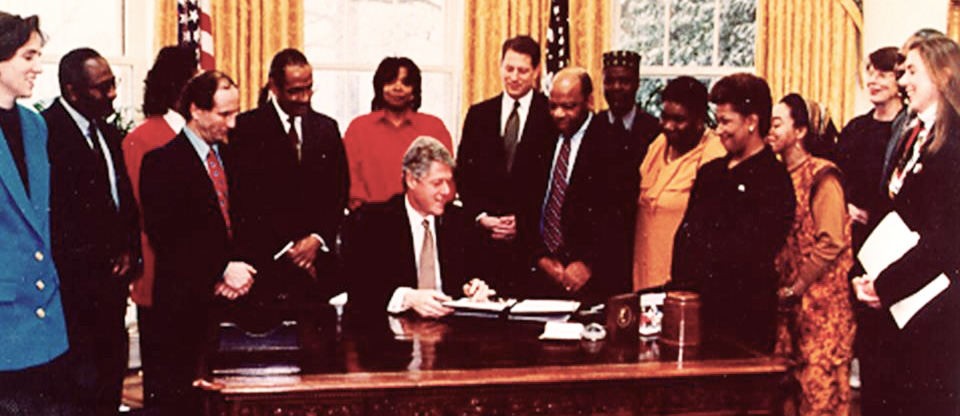EPA’s 20th Anniversary on Environmental Justice: A Perspective on Community Work
Reposted from EPA Connect Blog
By Mathy Stanislaus
I am excited about the 20th anniversary of the signing of Executive Order 12898. Former President Bill Clinton signed EO 12898 on February 11, 1994. I was not there, but I knew the people who were. Some of those people are no longer with us, so today I honor them.
It seems like just yesterday that I started my career right out of law and engineering school. Since that time, I have worked fervently with and for communities ensuring that they have a say in environmental decisions that affect their lives, their children’s lives, and the lives of fellow community members. The well-being of those community members is always in the front of my mind, and drives my work each day.
My foundation for working with communities started with my work on addressing issues such as solid waste facilities, Superfund sites and power plants. Through the redevelopment of brownfields, I sought to advance the renewal of New York’s low- and moderate-income communities. My experiences and the challenges I faced there generated fervor in me to press for greater consideration and inclusion of affected communities in environmental decision-making. I brought the same fervor to EPA when I came to the Office of Solid Waste and Emergency Response in June 2009.
Every day, I implore the people I work with to consider communities in everything they do – whether it’s permitting a facility, engaging stakeholders in the rulemaking process, or helping our state and local partners understand the importance of listening to the issues or challenges of their constituency.
I often ask myself and my staff, “What action can we take to make a community healthier and more economically sound?” That type of thinking is an important component in many recent programs and policies developed during my tenure. Brownfields’ Area-Wide Planning Grants, Community Engagement Initiative (CEI); Chemical Plant Safety and Security; Environmental Workforce Development and Job Training Program (EWDJT); safe recycling facilities; andTechnical Assistance for Communities (TASC) are examples of this thinking.
So, as you can see, I have carried my whole-hearted commitment to serve throughout my career. In my professional life, I’ve had the pleasure of working with some of the most amazing people and I owe most of my successes – both personal and professional – to these people.
At EPA, we will continue to look for opportunities to create healthy, green and sustainable communities. Feel free to share any opportunities that we may be missing.
Happy 20th Anniversary to all of you!
About the author: Mathy Stanislaus is the Assistant Administrator in EPA’s Office of Solid Waste and Emergency Response (OSWER), leading the Agency’s land cleanup, solid waste and emergency response programs. Mr. Stanislaus is a chemical engineer and environmental lawyer with over 20 years of experience in the environmental field in the private and public sectors. He received his law degree from Chicago Kent Law School and Chemical Engineering Degree from City College of New York.




















